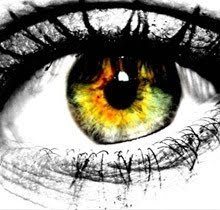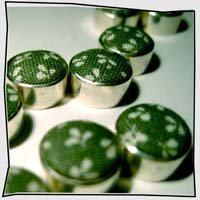
So I finally finished Reading by the Colors by Helen Irlen, and despite giving me a killer migraine after two days of non-stop reading - a fact which Irlen herself would probably think as incredibly ironic - it was really enlightening on how coloured filters air people with dyslexia.
Irlen's research is based on the study of people suffering from a condition called Scotopic Sensitivity Syndrome. S.S.S. is a sensitivity to certain wavelengths of light in which you have difficulty processing the full spectrum of light, this results in perceptual problems (not visual) which makes reading certain things such as black text on white paper (I know, I know!) incredibly painful. It also effects not only academic sucess but sporting ability, driving, reading music, coordination and generally you whole life.
What I found most interesting however was Irlen's study of the social aspects which are affected in S.S.S sufferers. In many cases these people are misdiagnosed, labelled as dumb, lazy, disruptive, unmotivated, failures...they are labelled in as many derogitory ways as you can imagine. This results in a poor self image and low self esteem and becomes a stigma which  makes even more people remain undiagnosed and suffer in silence.
makes even more people remain undiagnosed and suffer in silence.
 makes even more people remain undiagnosed and suffer in silence.
makes even more people remain undiagnosed and suffer in silence. This is also down to the fact that they are unable to recognise that what they feel - headaches, restlessness, fatigue, nausea, distortion etc - isn't actually the norm.
Think about it for a moment, we all know that we can read, but we don't comprehend that we don't all read in the same way. We all see things differently. So why do we assume that there is anything such as a 'normal' way of reading? Does print look the same to everyone?
One sufferer in Irlen's study discribed reading as a 'harrowing' experience and yet the unidentified suffers create coping strategies in order to appear normal. They learn through phonetics, they read the start and end of pieces of text in order to gleen information and they find all sorts of little tricks in order to appear the same as their friends. They are the invisible handicapped and yet despite the anxiety they feel, teachers often don't notice any of these issue or don't agree with the diagnoses, the child is punished for not being able to function the same as their peers.


That fact is staggering to me.
Even this week I have been faced with issues surrounding the Reading by the Colors theory. In our Methods and Methodologies lecture this week we were handed out an extract from a book to read. At which point (sharing of course which always makes life more interesting) myself and Jo had to read two pages of bright white paper with black print in the space of seven minutes under bright flourescent lighting...we are both slow readers but I managed to skim through well enough with one eye shut and my hand shading my eyes...did I actually take in any of the information? Very little. I needed to re-read the pieces as the lecturer asked questions, which when given a task like that is usually how I respond. That's my coping mechanism.
I push myself so hard that I either end up unable to think straight and have a migraine that won't go away or I gleen information and take longer to process it. It shouldn't be like that when simply printing out documents on coloured paper or giving us all a hand out and a few extra minutes would help. One of Irlen's suggested coping mechanisms without the aid of coloured filters is even to simply highlight entire documents for easier reading.
Anway, anyone who's interested in Dyslexia or Scotopic Sensitivity Syndrome I would heartly recommend reading this book, it is thoroughly enlightening.
Irlen, H. (1991) Reading by the Colors: Overcoming Dyslexia and other Reading Disabilities through the Irlen Method. United States of America: Avery












No comments:
Post a Comment